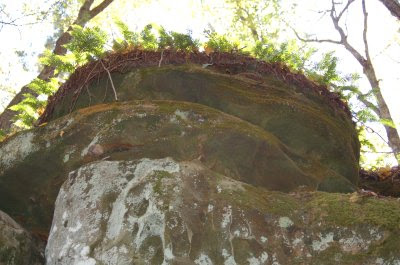
Although I've billed this as a knitting blog, there has been precious little knitting in 2006, other than small repair and redesign projects. However, I recently started a pair of socks in Browns Sheep Farms sport weight wool (not sure of the official name--it was a remnant from Appalachian Baby Design days.) The pattern is called "Little Wave" in Barbara G. Walker's Second Treasury of Knitting Designs. It's a six-stitch repeat that forms a sort of rib, with a traveling twist-stitch zig-zag on a garter-stitch ground. It makes very nice socks. In Walker's book, the pattern is given for back-and-forth knitting. I had to rewrite it for myself in circular knitting, so here's my revision, for those who may want to use it in four-needle socks.
R1: *Knit all stitches*
R2: *Knit 4, purl 2*
R3: *Knit 3, Left Twist, Knit 1*
R4: *Knit 3, Purl 1, Knit 1, Purl 1*
R5: *Knit 4, Left Twist*
R6: *Knit 3, Purl 2, Knit 1*
R7: *Knit all stitches*
R8: *Knit 3, Purl 2, Knit 1*
R9: *Knit 4, Right Twist*
R10: *Knit 3, Purl 1, Knit 1, Purl 1*
R11: *Knit 3, Right Twist, Knit 1*
R12: *Knit 4, purl 2*
Barbara Walker's Right Twist: Knit 2 together, leaving stitches on left-hand needle; insert right-hand needle from the front between the two stitches just knitted together, knit the first stitch again. Slip both stitches from the needle together.
Barbara Walker's Left Twist: Skip one stitch, knit into back of next stitch; then insert right-hand needle into backs of both stitches (skipped stitch and next stitch) and knit two together in back of stitches.























